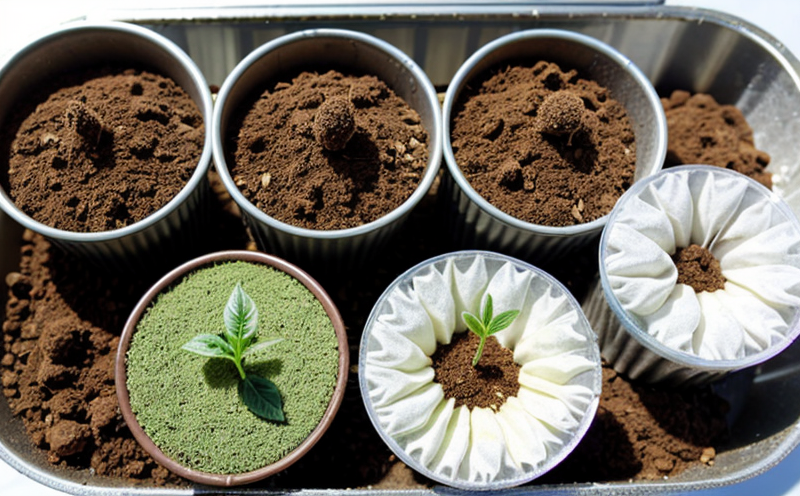Heat Stress Germination Testing
In agriculture and forestry testing, seed quality is a critical factor that can influence crop yield and sustainability. One of the most important tests in this context is heat stress germination testing. This type of testing assesses how seeds behave under elevated temperatures, simulating real-world conditions where heat stress may occur during planting or natural environmental factors.
The goal of heat stress germination testing is to determine a seed's ability to withstand and recover from heat exposure. Such tests are vital for ensuring that seeds will perform optimally when planted in fields exposed to high temperatures. By performing this test, agriculturalists and foresters can select the most robust varieties of crops or trees, thereby enhancing crop productivity and sustainability.
Heat stress germination testing involves exposing seed samples to controlled temperature conditions that exceed normal ambient levels. This allows for a precise evaluation of how different seeds respond under these stressful circumstances. The results provide valuable insights into the viability and vigor of the seeds, which is essential for informed decision-making in breeding programs and crop improvement.
The process typically begins with preparing seed samples by selecting representative lots from larger batches. These samples are then subjected to a series of temperature stress levels that mimic potential field conditions. The seeds are placed in controlled environments where they are exposed to temperatures ranging from 35°C to 45°C, depending on the specific requirements for the test.
During this period, the seeds undergo various stages of germination, which are closely monitored and recorded. Factors such as time taken to germinate, percentage of germinated seeds, and overall vigor of the sprouts are meticulously documented. This data helps in assessing not just the basic viability of the seeds but also their ability to grow under stress conditions.
The testing process is designed to simulate real-world scenarios where heat stress might occur during planting or natural environmental factors. By understanding how seeds perform under these conditions, agriculturalists and foresters can make informed decisions about seed selection, breeding programs, and crop improvement strategies. This knowledge is crucial for enhancing the robustness of crops and trees in various climates.
Heat stress germination testing is not only beneficial for selecting resilient seed varieties but also plays a pivotal role in ensuring compliance with international standards and regulations. By adhering to these standards, agricultural stakeholders can ensure that their products meet quality benchmarks set by industry bodies and regulatory authorities.
In summary, heat stress germination testing is an essential tool in the agriculture and forestry sectors, providing critical insights into seed viability under stressful conditions. This testing helps in selecting robust varieties of crops or trees, thereby enhancing crop productivity and sustainability.
Why It Matters
The importance of heat stress germination testing cannot be overstated in the context of agriculture and forestry. In recent years, climate change has led to increasingly warmer temperatures worldwide, affecting agricultural practices and crop yields significantly. Heat stress can have detrimental effects on seed viability and overall plant health.
- Enhanced Resilience: By identifying seeds that can withstand heat stress, farmers and foresters can select varieties that are more resilient to environmental challenges, leading to higher yields and better crop performance.
- Breeding Programs: Heat stress testing is integral to breeding programs aimed at developing new seed varieties that can thrive in warmer conditions. This helps in adapting agricultural practices to changing climatic conditions.
- Regulatory Compliance: Many countries have regulations and standards for seed quality, including germination rates under various environmental stresses like heat. Heat stress testing ensures compliance with these regulatory requirements.
- Economic Impact: The economic benefits of selecting resilient seeds are substantial. Higher yields translate to increased profitability for farmers, while improved crop performance contributes positively to national economies.
Moreover, understanding how seeds respond to heat stress can help in optimizing planting schedules and irrigation practices, further enhancing the efficiency of agricultural operations. This knowledge is particularly valuable as climate change continues to pose challenges to global food security.
Applied Standards
Heat stress germination testing aligns with several international standards that are crucial for ensuring accuracy and consistency in seed quality assessments. These include:
- ISO 3632-1:2017 – This standard provides methods for determining the percentage of sound seeds, including heat stress germination tests.
- ASTM D5849 – Offers guidelines on seed viability testing under controlled temperature conditions.
- EN 3632-1:2017 – Provides specifications for seed quality assessment, including heat stress germination tests.
- IEC 62598 – Pertains to the environmental testing of seeds and is relevant in assessing their performance under various stress conditions.
These standards provide a framework for conducting accurate and reliable heat stress germination tests, ensuring that the results are consistent with international benchmarks. Compliance with these standards not only enhances the credibility of the testing process but also ensures that agricultural products meet global quality requirements.
Quality and Reliability Assurance
The reliability of heat stress germination testing is paramount for ensuring accurate assessment of seed viability under stressful conditions. Here are some key aspects that contribute to the quality and reliability of this type of testing:
- Standardized Protocols: Adherence to internationally recognized standards ensures consistency in test procedures, which is crucial for obtaining reliable results.
- Controlled Environment: The use of controlled environmental chambers allows for precise temperature regulation, replicating real-world stress conditions accurately.
- Representative Sample Selection: Careful selection of seed samples ensures that the test reflects the true quality and variability within a batch.
- Regular Calibration: Ensuring that all instruments used in testing are regularly calibrated maintains accuracy throughout the process.
- Data Analysis: Advanced statistical methods are employed to analyze data, providing comprehensive insights into seed performance under stress conditions.
The combination of these factors ensures that heat stress germination tests yield reliable and accurate results. This reliability is essential for making informed decisions about seed selection, breeding programs, and agricultural practices in response to changing environmental conditions.





